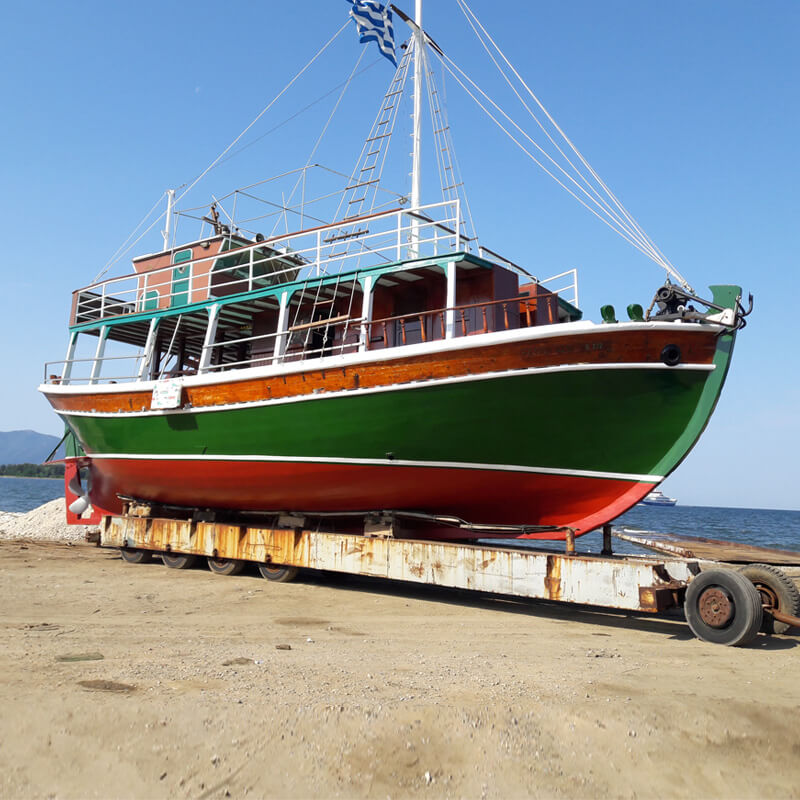History

Τhe most seaworthy Greek traditional wooden vessel
The type “Trehantiri”, with its high width to length proportion (length : width = 3 : 1), the shape of its bow and stern, as well as the shape of its hull formed by the wooden frames, is the most seaworthy Greek traditional wooden vessel. It was used for fishing, small-scale trading and transportation across the Aegean Sea. It was the first type of large wooden vessel to be built by the Greeks after the fall of the Byzantine Empire. The first Trehantiri-type vessels can be traced back to 1658.
Our vessel was named in honor of the holy icon of Mary, known as “Axion Estin”. In the liturgical life of the Church, the term “Axion Esti(n)” (“It Is Truly Meet”) refers to the hymn to the Virgin Mary, which is sung in the course of the Divine Liturgy immediately after the consecration of bread and wine.
"Axion Esti,” a name of great significance
“Axion Esti” is also the name given to the holy icon of the Theotokos (Mother of God) before which, according to tradition, the hymn was revealed. It stands in the high place of the altar (sanctuary) of the katholikon (main church) of Karyes on Mount Athos.
Since that time, the icon is considered the protector of the Aghion Oros (Holy Mountain), as well as its holiest object. As it goes for modern Greece, for Orthodox believers the image bears much significance and is generally very well-known.
Apart from this religious aspect, Axion Esti is also a long poem, written by our great poet Odysseas Elytis, in which the speaker explores the essence of his being, as well as the identity of his country and people. This poem, set to music by Mikis Theodorakis, became immensely popular and contributed to Elytis earning the Nobel Prize in 1979.





